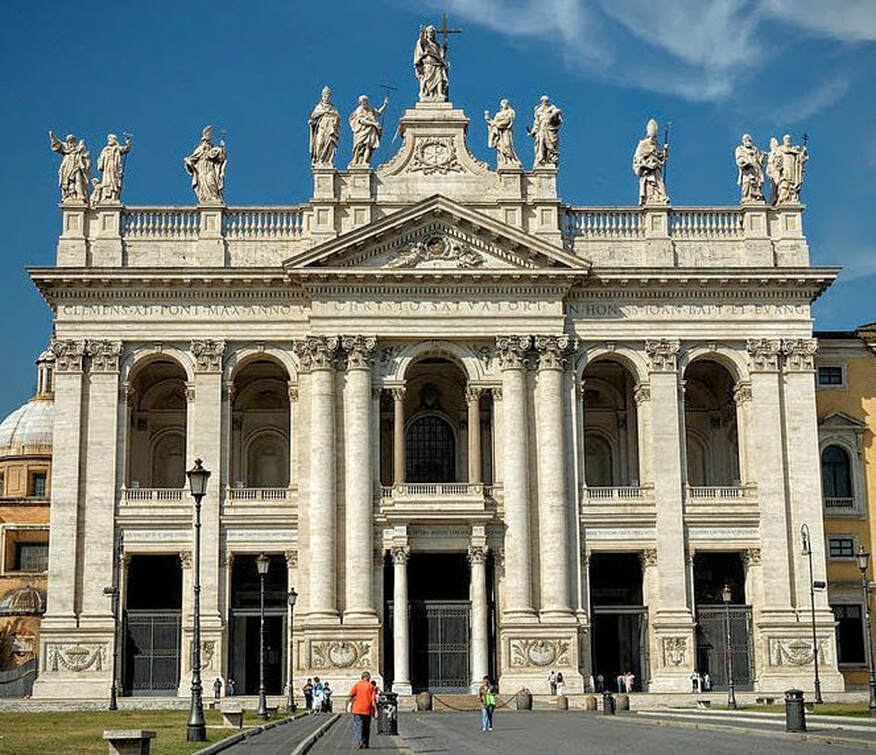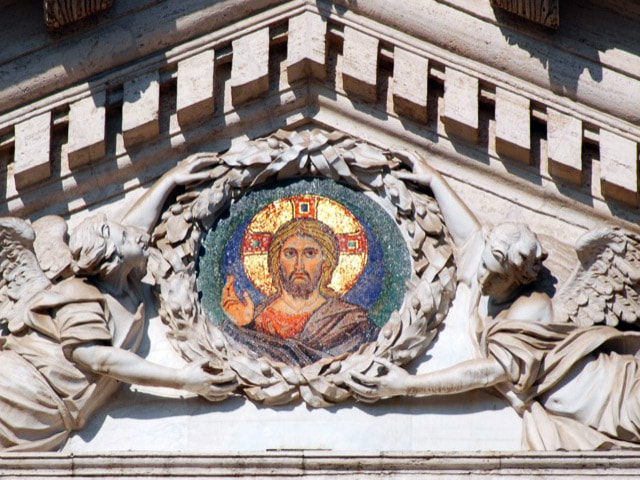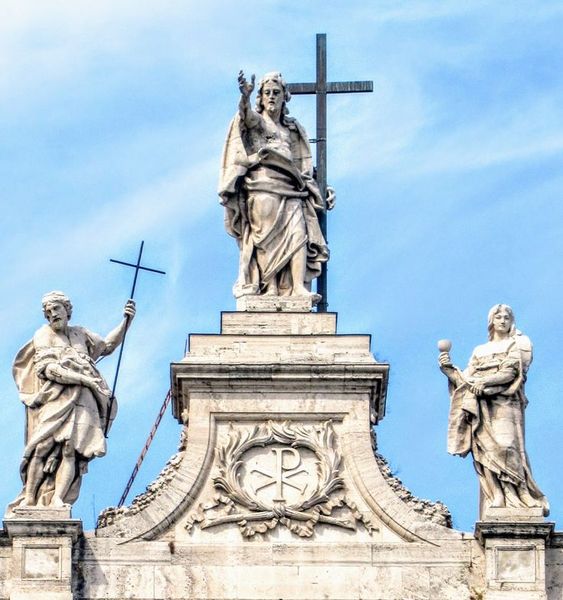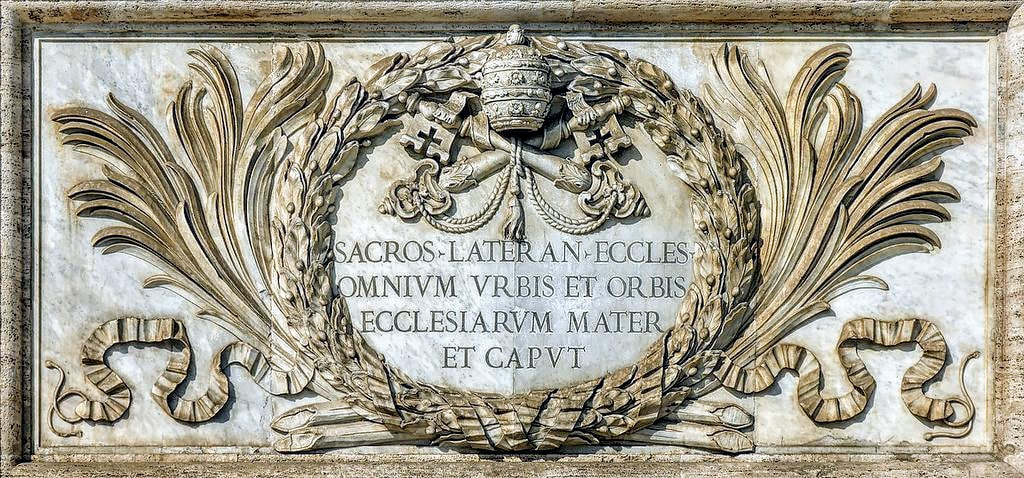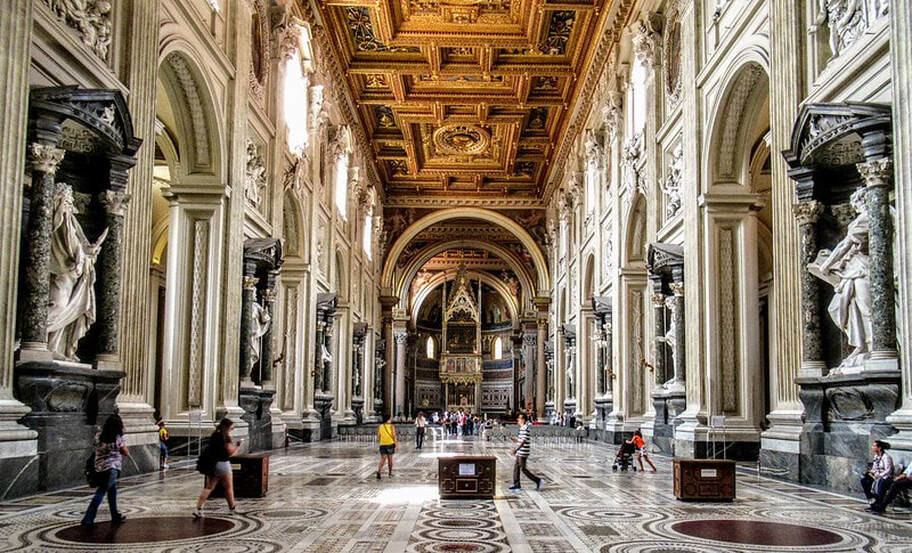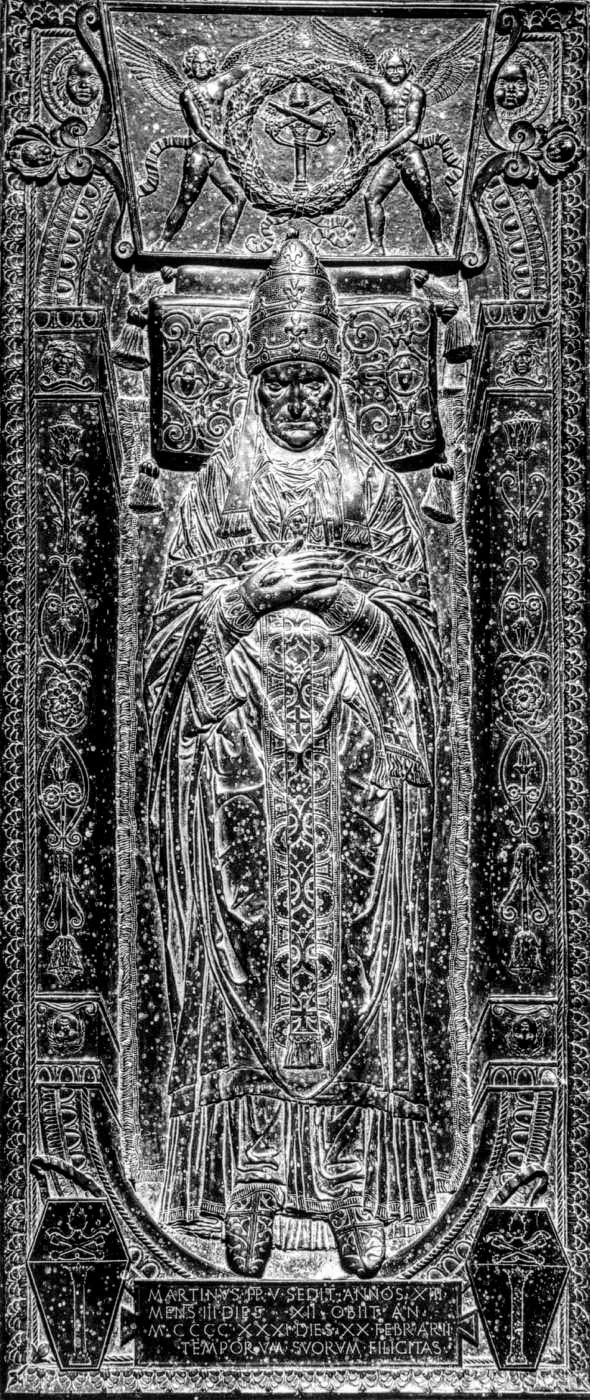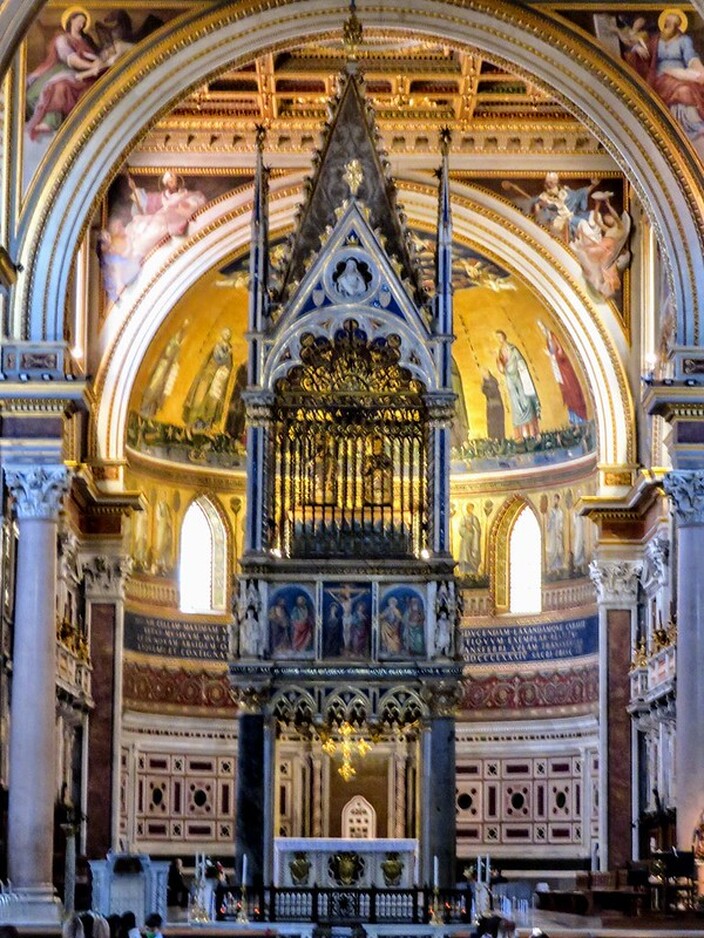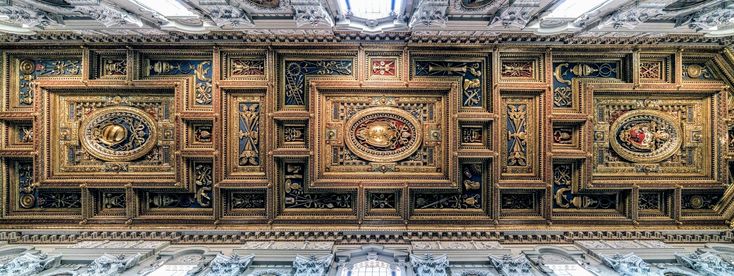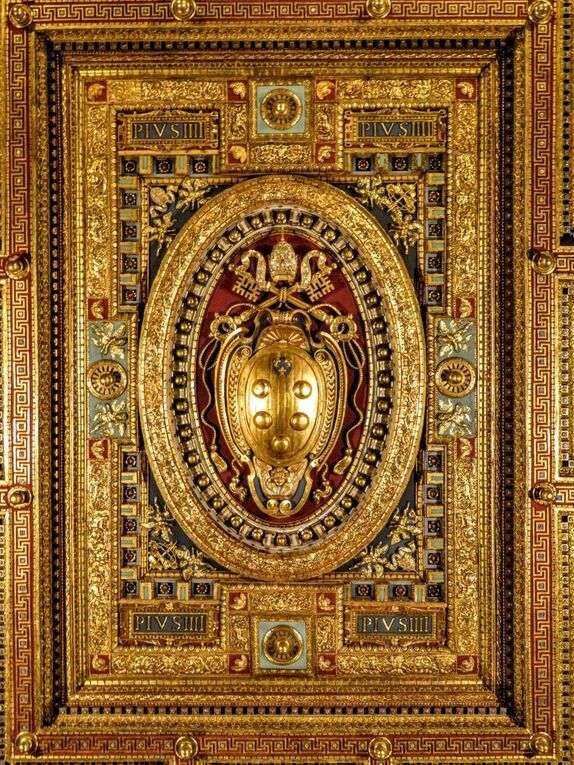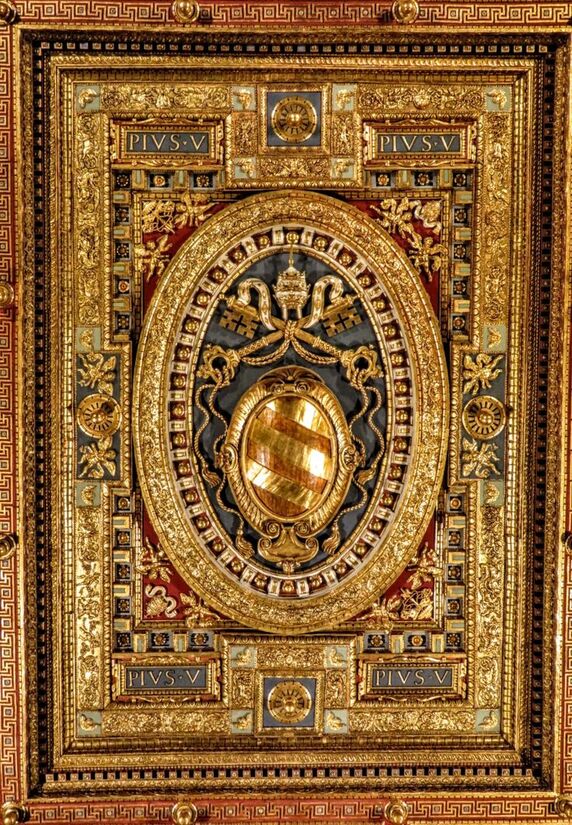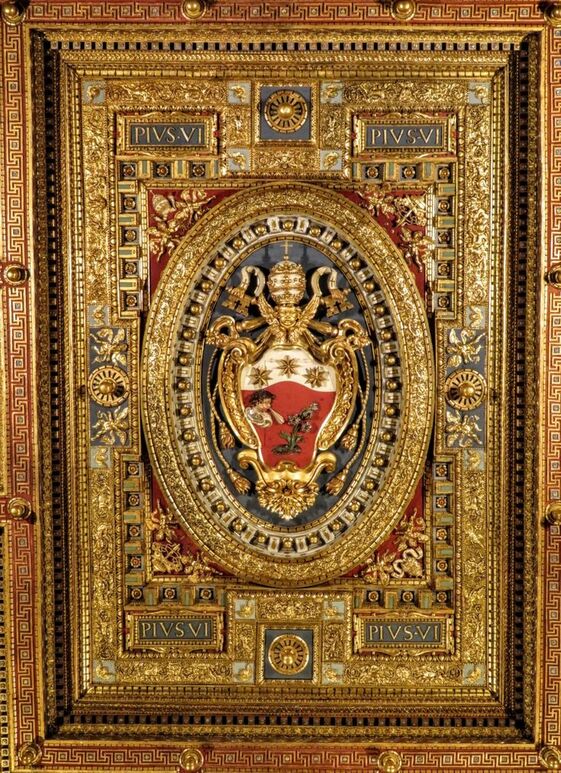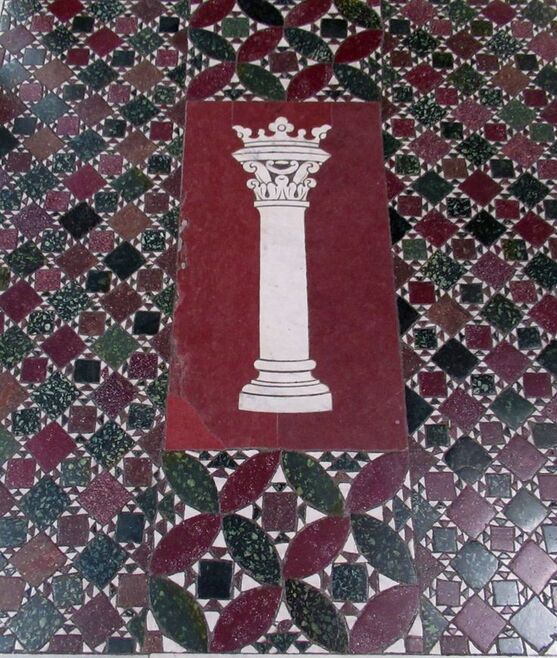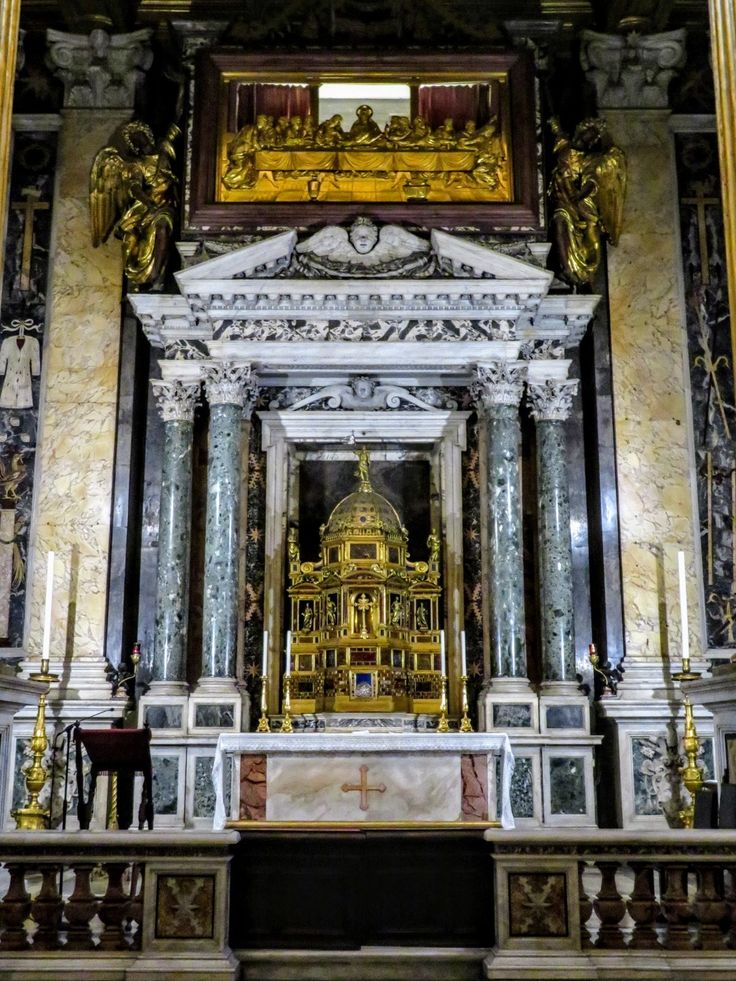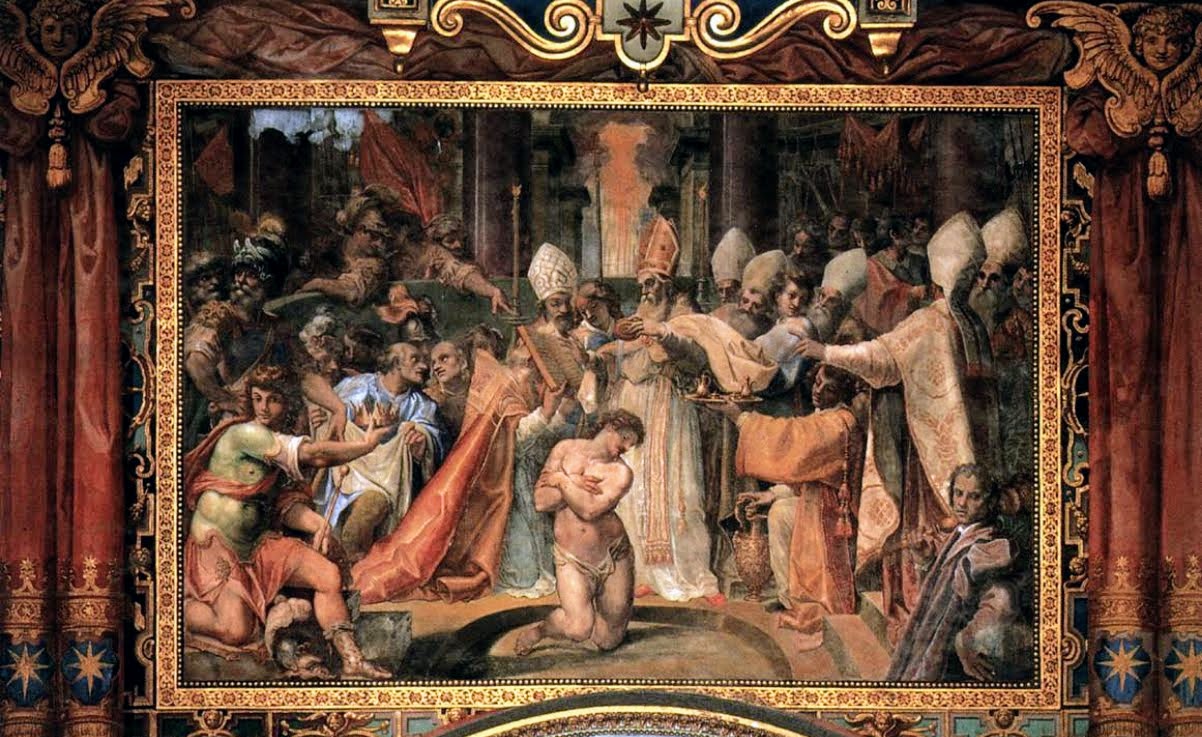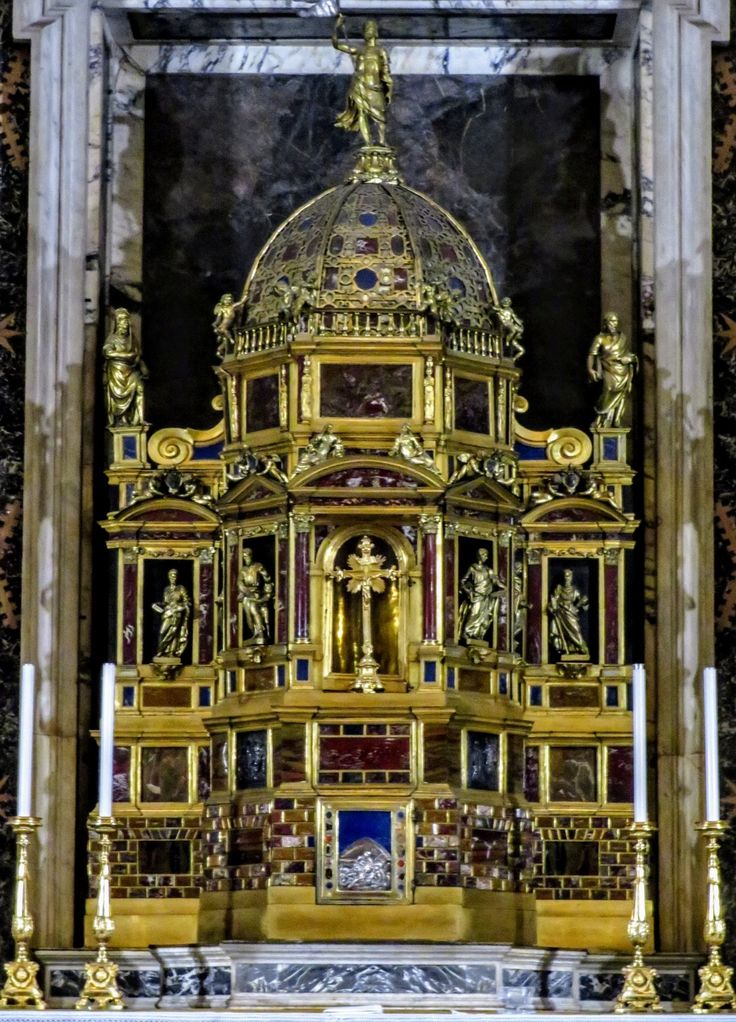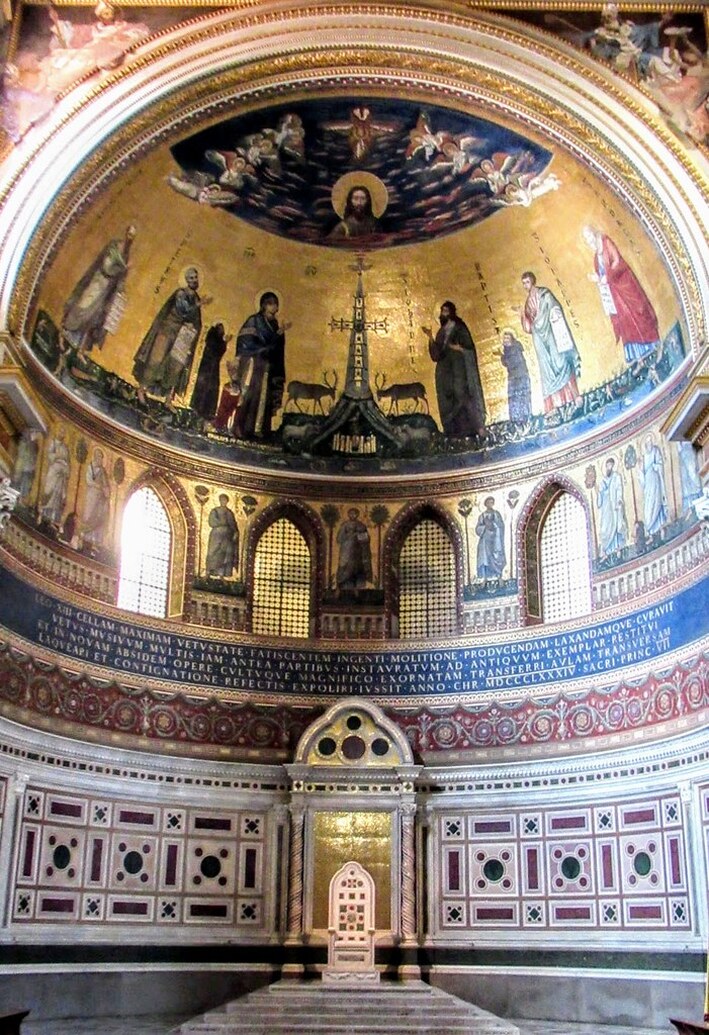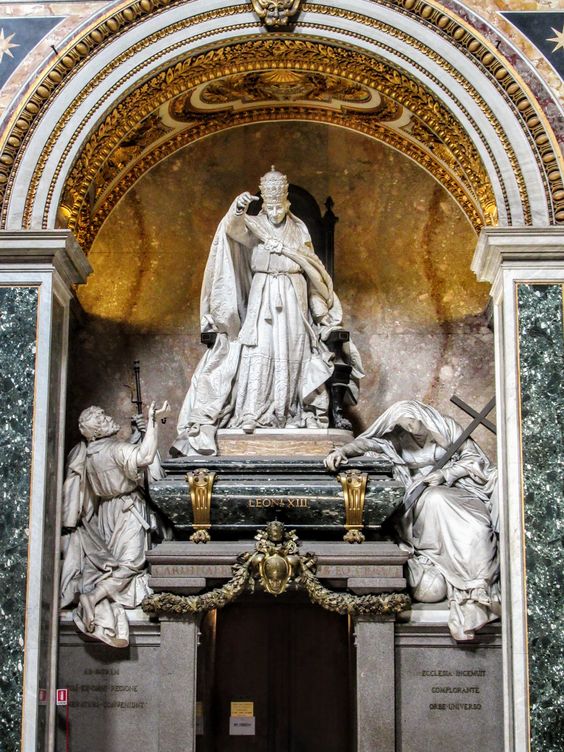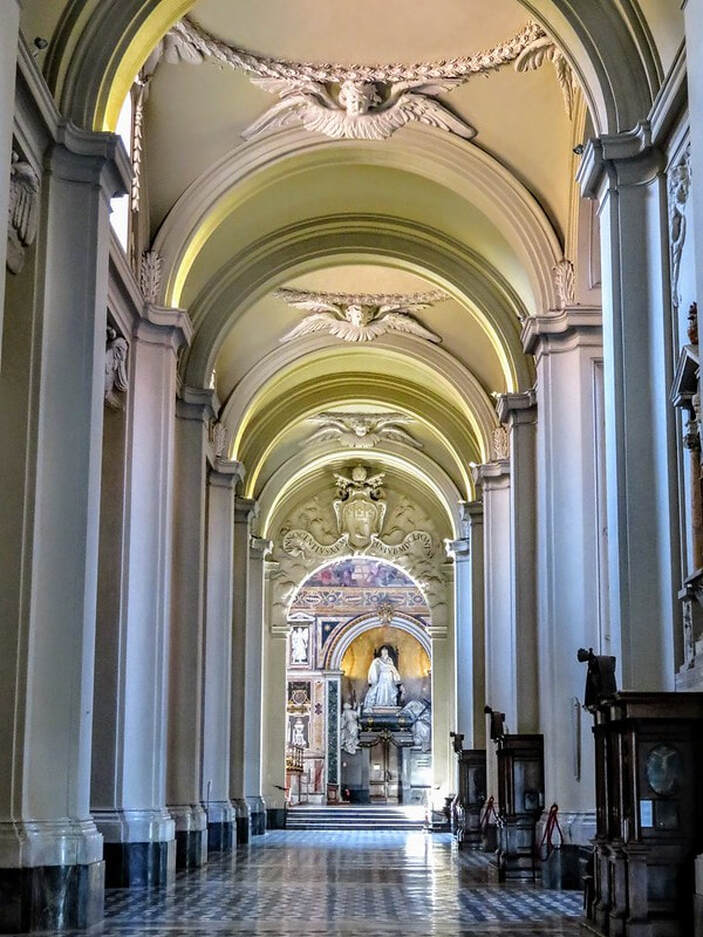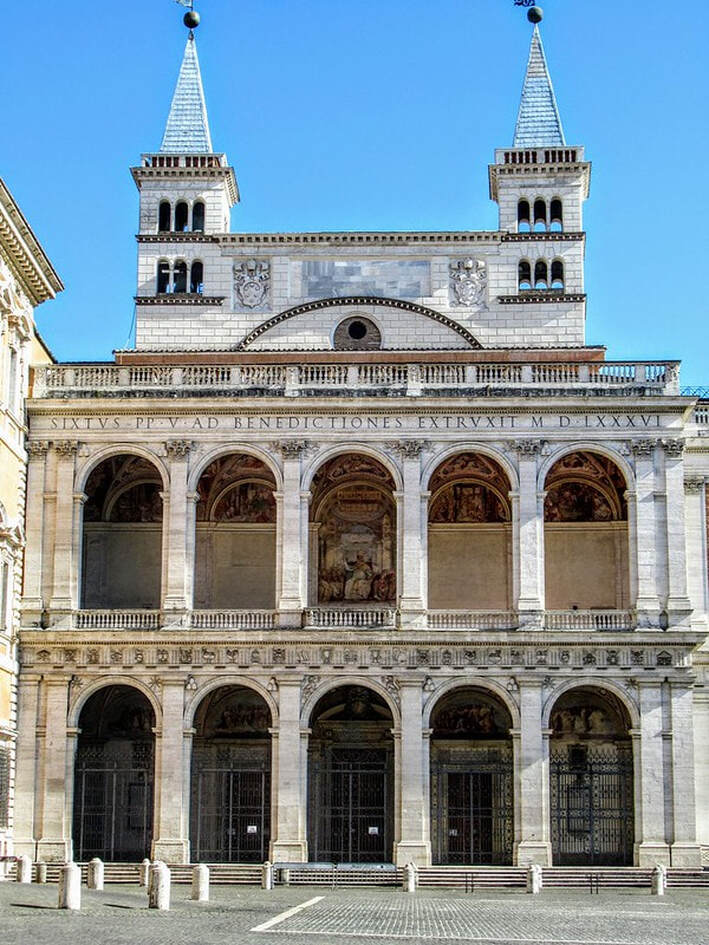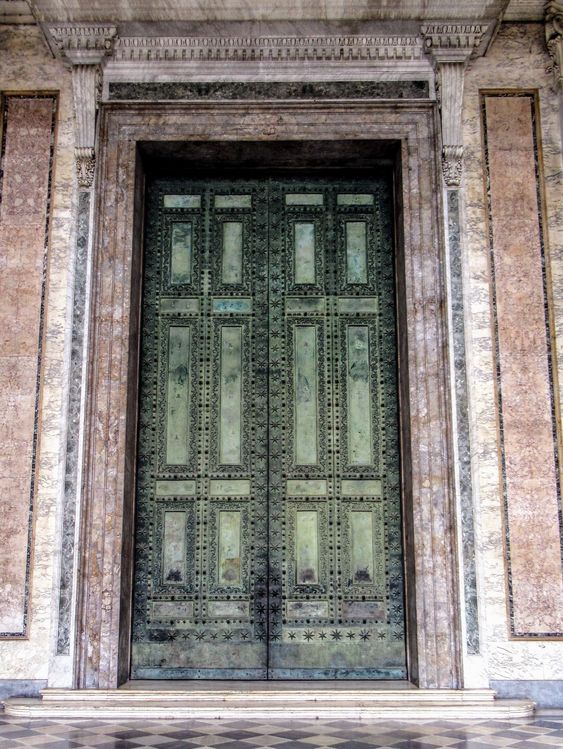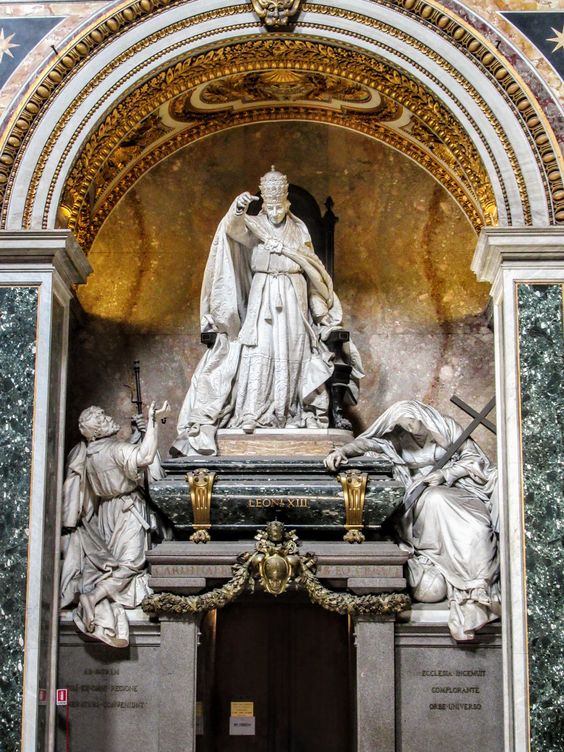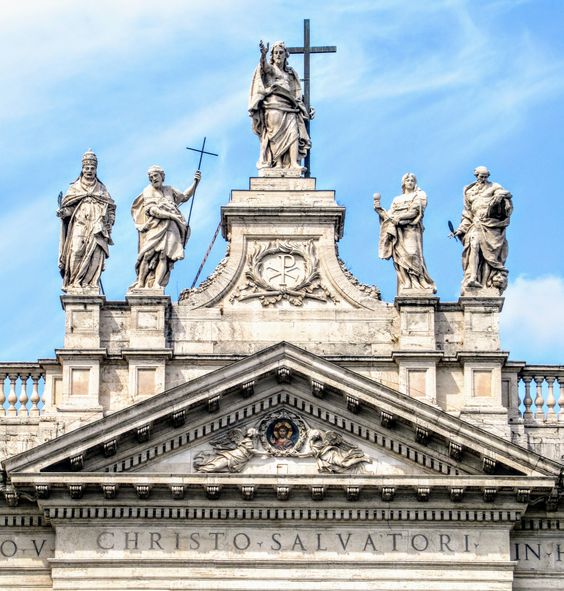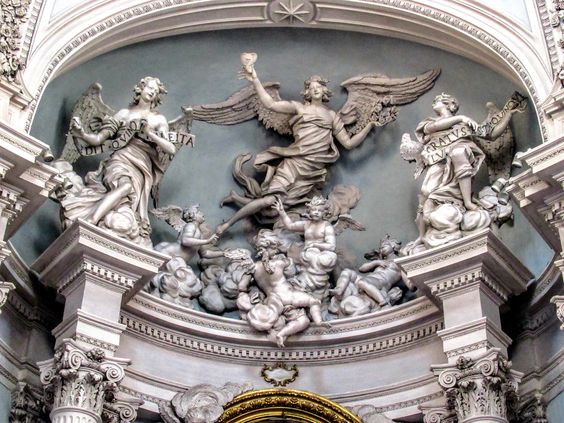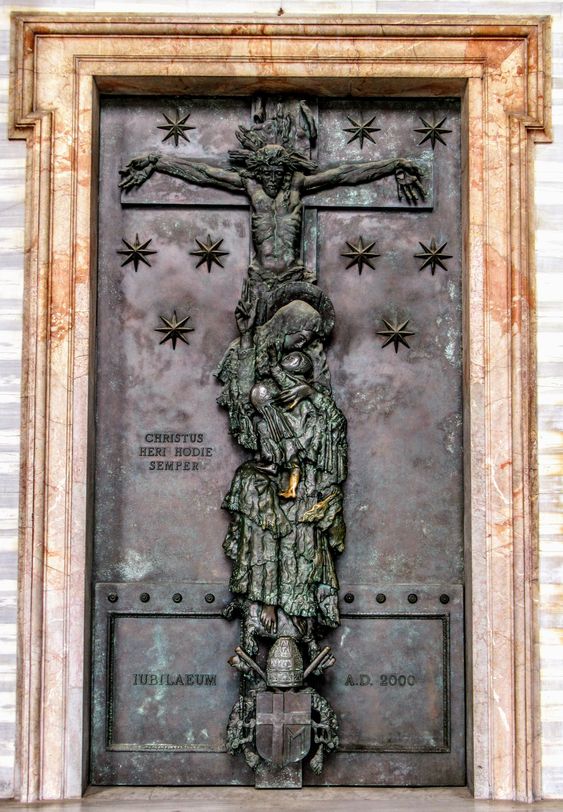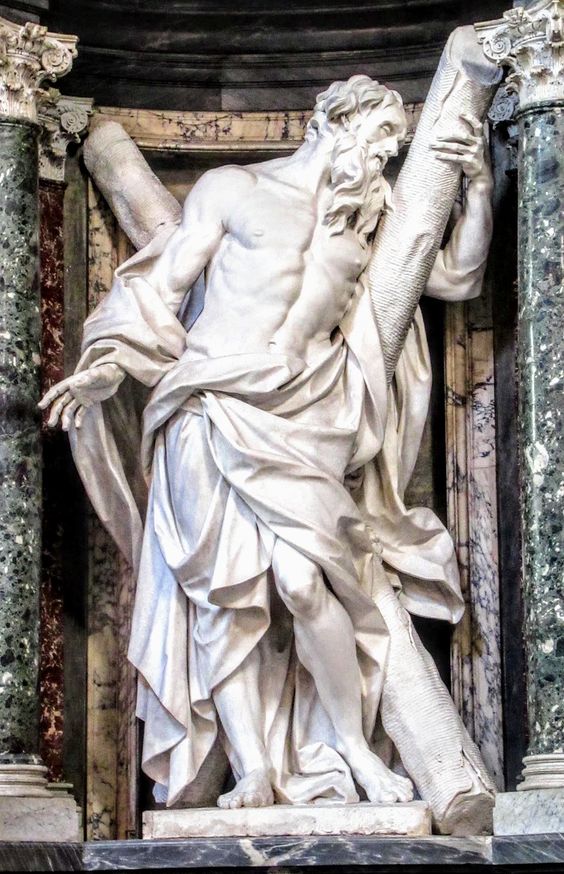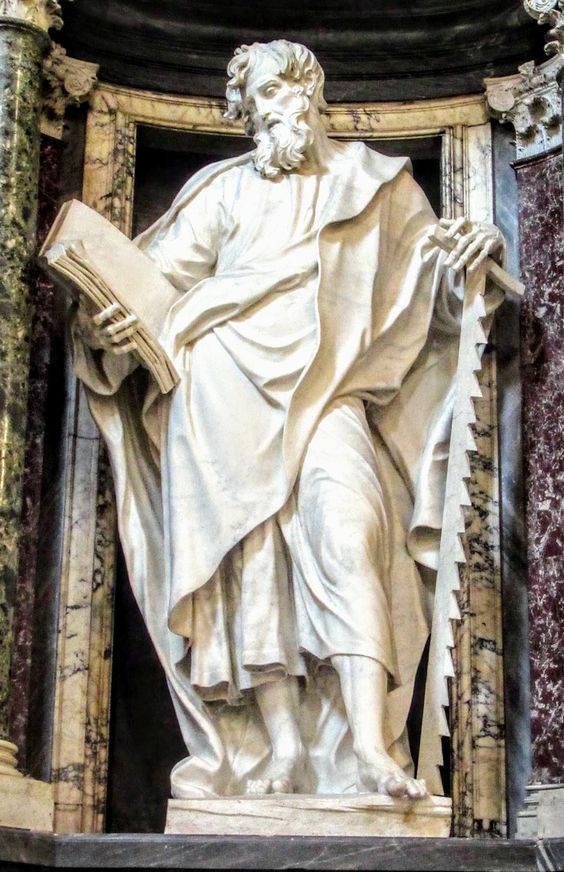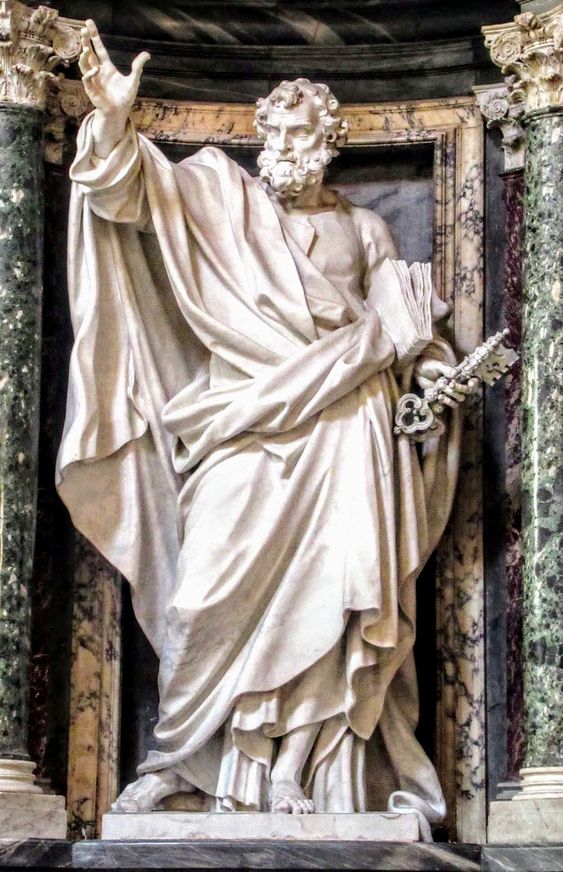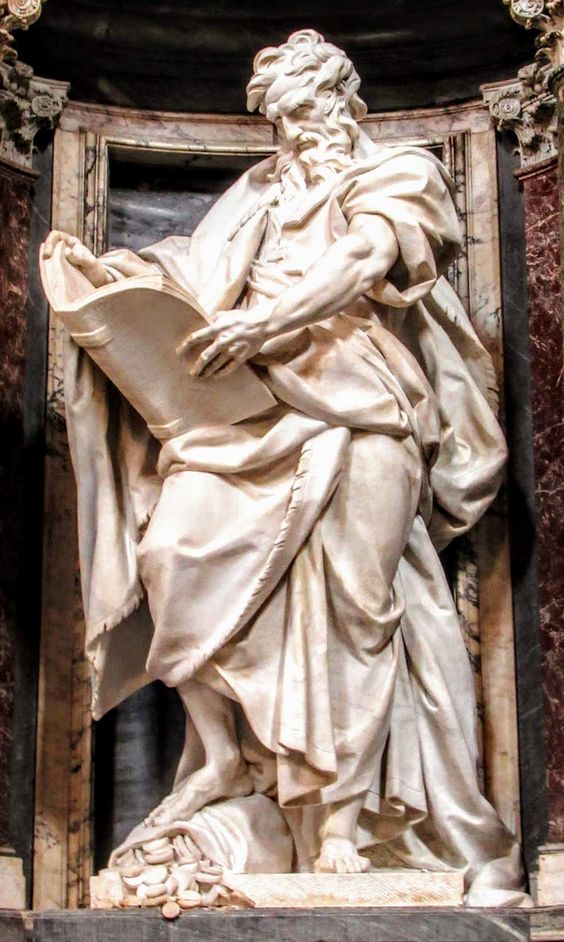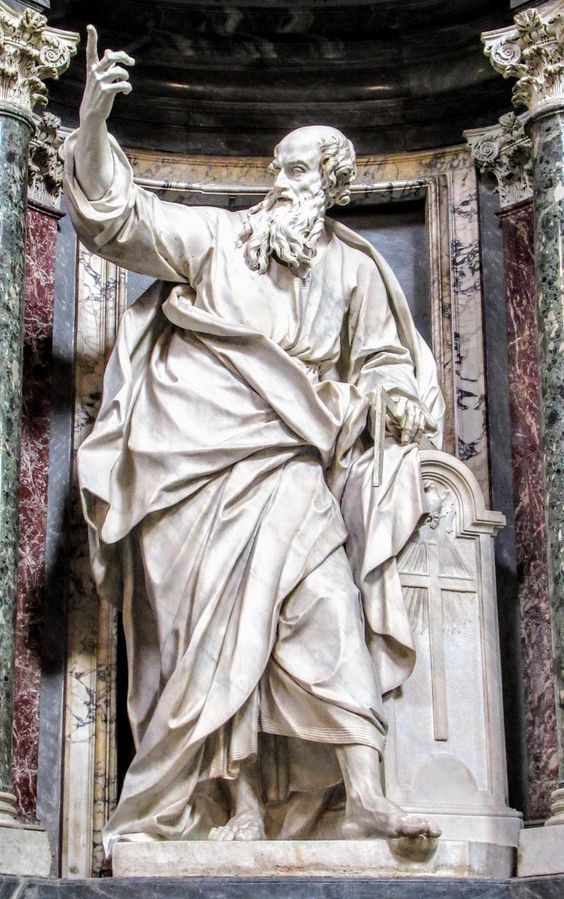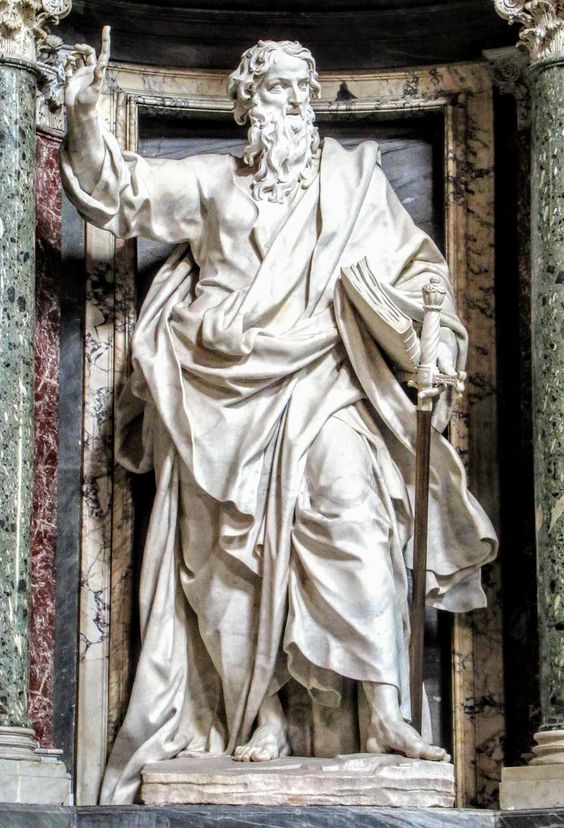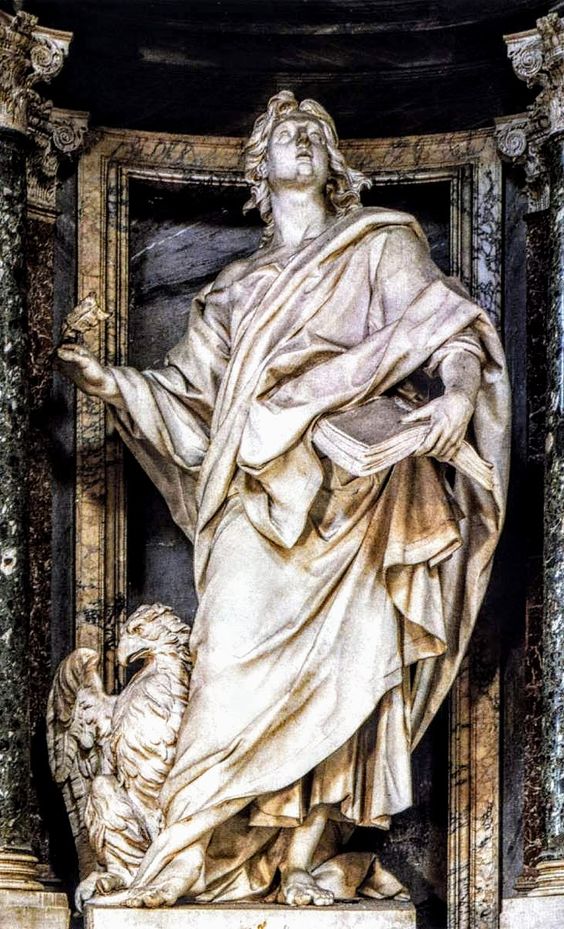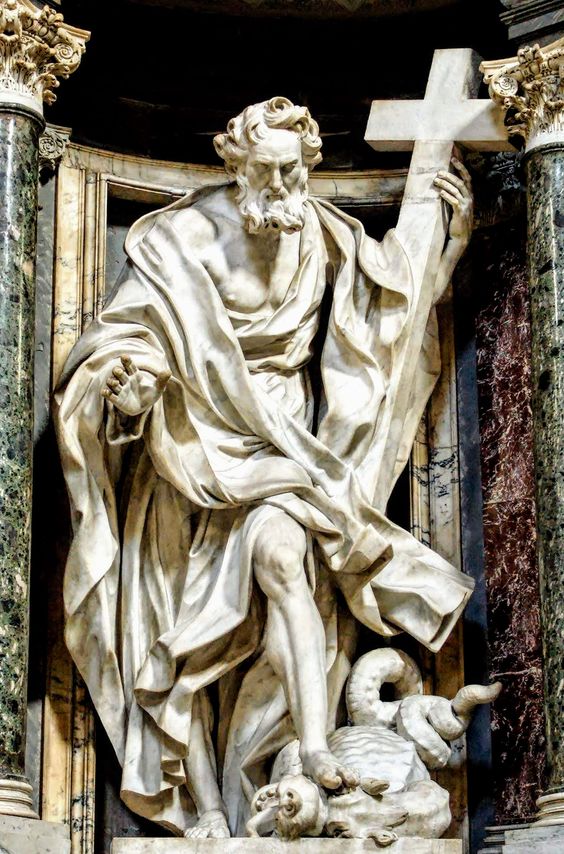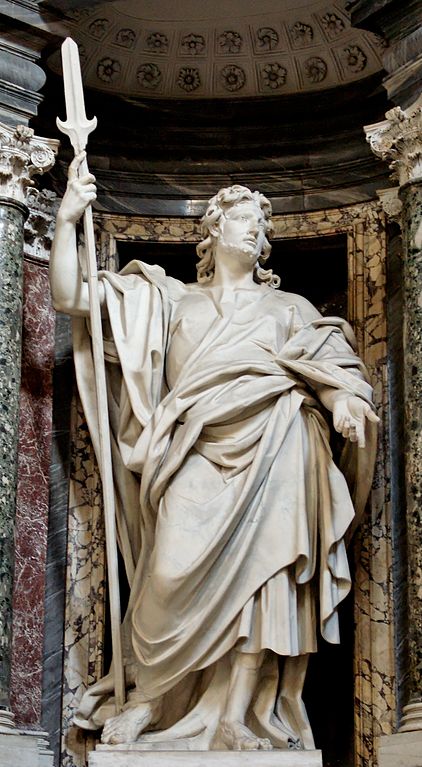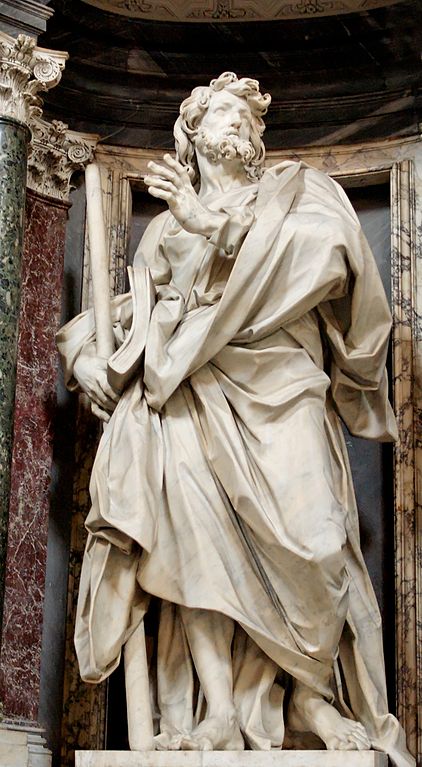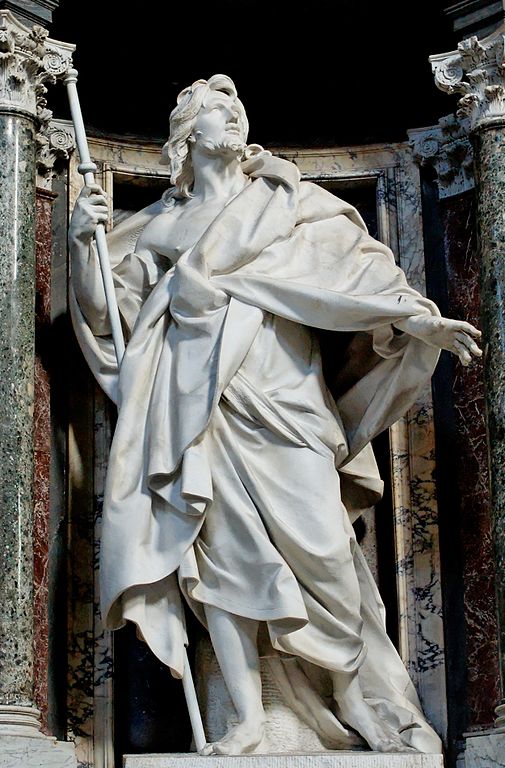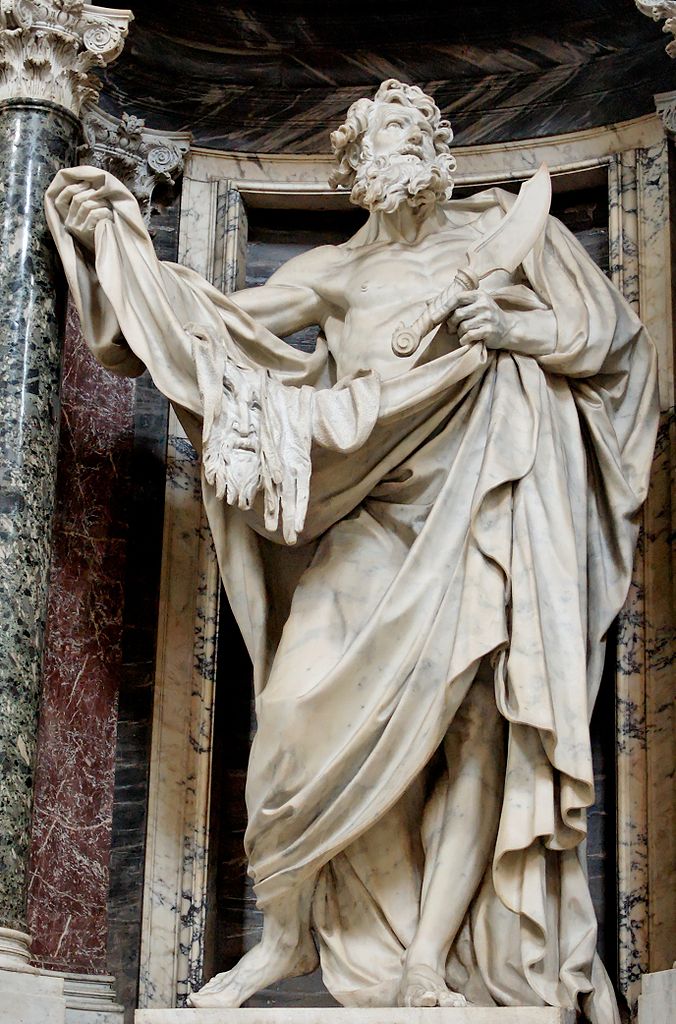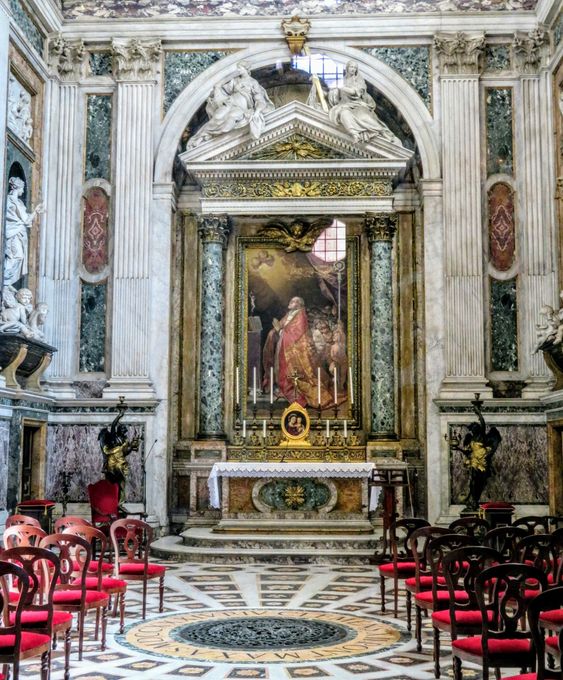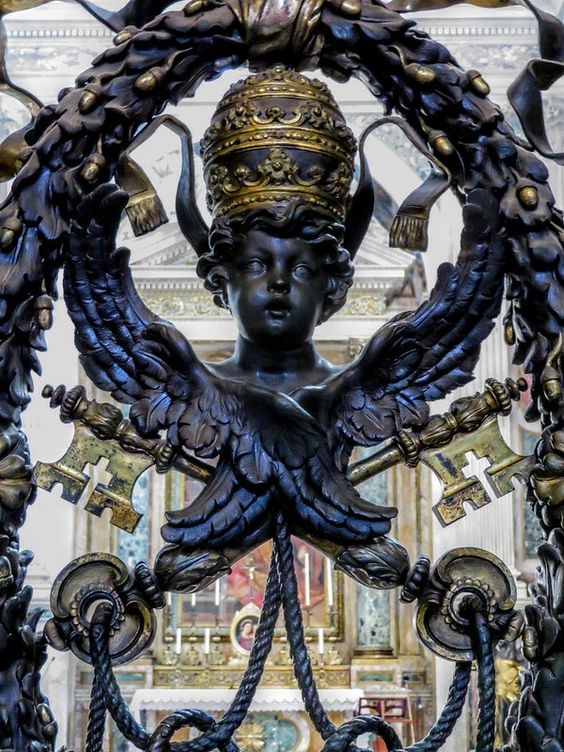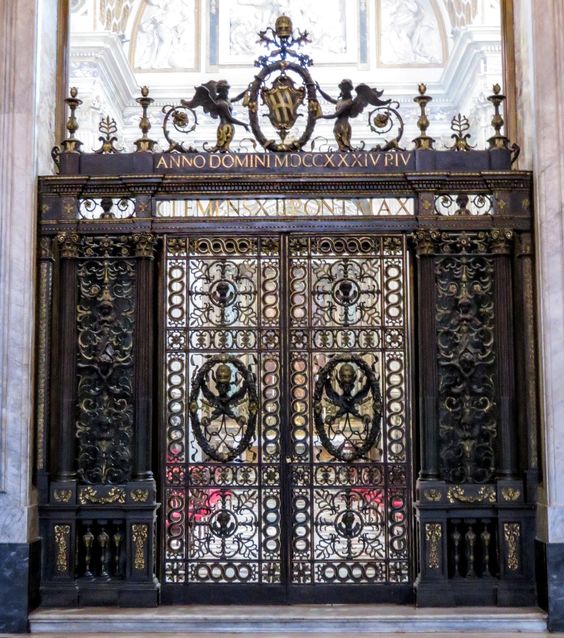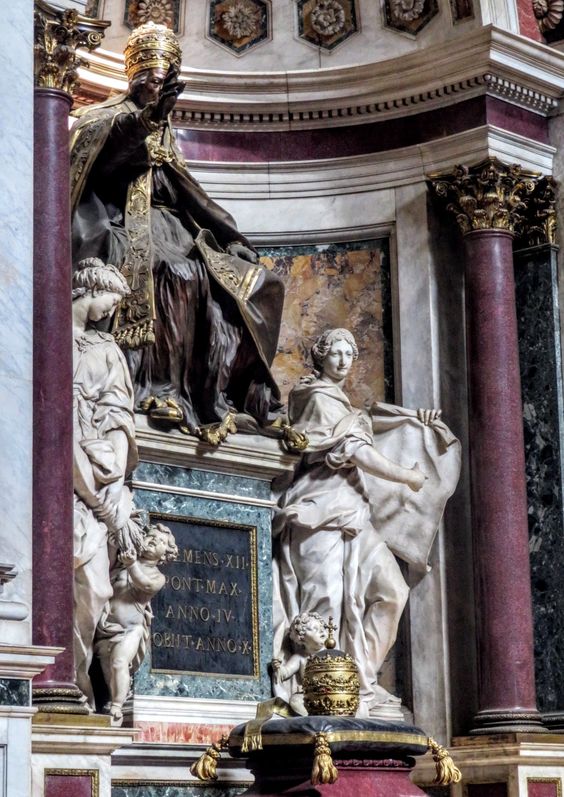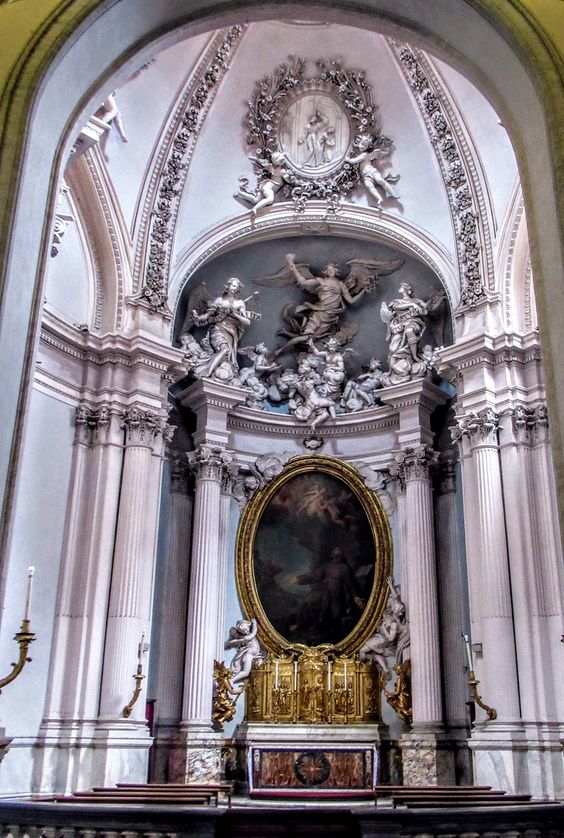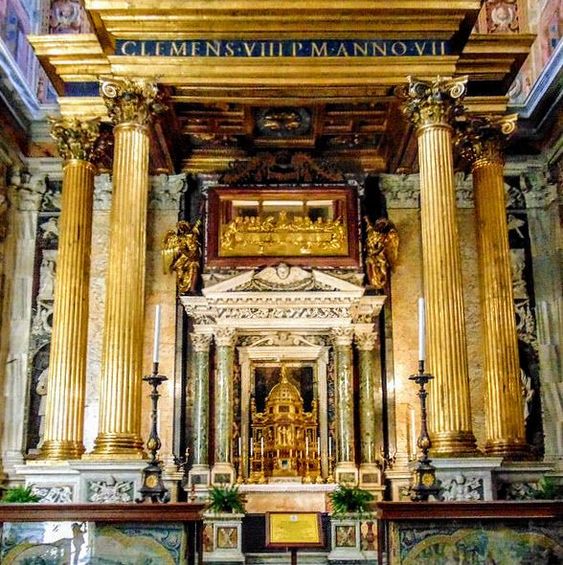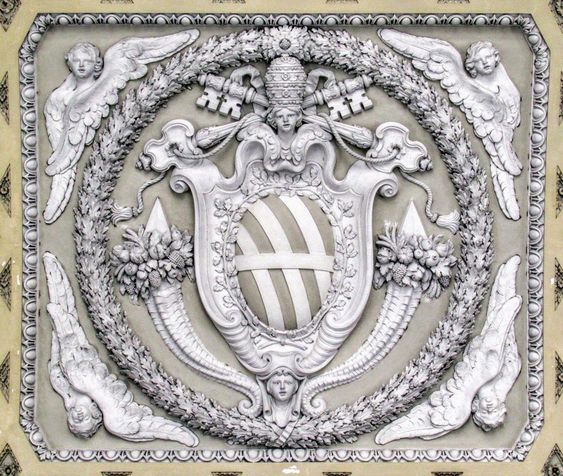- Home
- Walking Tours
- Blog
-
St Peter's Basilica
- Altars
- Baldacchino
- Chair of St Peter
- Chapel of the Baptistery
- Chapel of the Bl. Sacrament
- Chapel of the Choir
- Chapel of the Pieta
- Crossing >
- Dome
-
Monuments
>
- Countess Matilda of Canossa
- Maria Clementina Sobieska
- Queen Christina of Sweden
- Pope Innocent VIII
- Pope Paul III
- Pope Gregory XIII
- Pope Gregory XIV
- Pope Leo XI
- Pope Urban VIII
- Pope Alexander VII
- Pope Clement X
- Pope Innocent XI
- Pope Alexander VIII
- Pope Innocent XII
- Pope Benedict XIV
- Pope Clement XIII
- Pope Pius VII
- Pope Leo XII
- Pope Pius VIII
- Pope Gregory XVI
- Pope Pius X
- Pope Benedict XV
- Pope Pius XI
- Pope Pius XII
- Pope John XXIII
- The Stuarts
- Nave
- Portico >
- Statue of St Peter
- Statues of Founder Saints
- Transept
- Tribune
- St Peter's Square
- Vatican Museums
- Sistine Chapel
-
Fountains
- Trevi Fountain
- Fontana della Barcaccia
- Fontana della Peschiera
- Fountain in Piazza Colonna
- Fountain in Piazza delle Cinque Scole
- Fountain in Piazza dell' Aracoeli
- Fountain in Piazza Nicosia
- Fountain in Piazza di S.M. in Trastevere
- Fountain of Moses
- Fountain of Neptune
- Fountains of Piazza Farnese
- Fountain of Ponte Sisto
- Fountain of the Acqua Paola
- Fountain of the Bees
- Fountain of the Cannonball
- Fountain of the Frogs
- Fountain of the Four Rivers
- Fountain of the Goddess Roma
- Fountain of the Lateran Obelisk
- Fountain of the Mask
- Fountain of the Moor
- Fountain of the Naiads
- Fountain of the Pantheon
- Fountains of Piazza del Popolo
- Fountain of the Porter
- Fountains of St Peter's Square
- Fountain of the Seahorses
- Fountain of the Triton
- Fountain of the Turtles
- Fountains of the Two Seas
- Four Fountains
- Rioni Fountains
- Street Fountains
- Venice Marries the Sea
- On This Day in Rome
-
Churches
- Chiesa del Gesù >
- Chiesa Nuova
- Lateran Baptistery
- San Bartolomeo all' Isola
- San Benedetto in Piscinula
- San Bernardo alle Terme
- San Carlo ai Catinari
- San Carlo al Corso
- San Carlo alle Quattro Fontane
- San Clemente >
- San Crisogono
- San Francesco a Ripa >
- San Giorgio in Velabro
- San Giovanni a Porta Latina
- San Giovanni dei Fiorentini
- San Giovanni in Laterano >
- San Girolamo della Carità >
- San Gregorio Magno
- San Lorenzo fuori le Mura
- San Lorenzo in Damaso
- San Lorenzo in Lucina
- San Luigi dei Francesi >
- San Marcello al Corso
- San Marco
- San Martino ai Monti
- San Nicola in Carcere
- San Pancrazio
- San Paolo fuori le Mura
- San Pietro in Montorio
- San Pietro in Vincoli
- San Saba
- San Salvatore in Lauro
- San Sebastiano fuori le Mura >
- San Silvestro in Capite
- San Vitale
- Sant' Agnese fuori le Mura
- Sant' Agnese in Agone
- Sant' Agostino
- Sant' Alessio
- Sant' Anastasia
- Sant' Andrea al Quirinale
- Sant' Andrea della Valle
- Sant' Andrea delle Fratte
- Sant' Antonio dei Portoghesi
- Sant' Apollinare
- Sant' Eustachio
- Sant' Ignazio di Loyola
- Sant' Ivo alla Sapienza
- Santa Caterina dei Funari
- Santa Cecilia in Trastevere
- Santa Costanza
- Santa Croce in Gerusalemme >
- Santa Francesca Romana
- Santa Maria ad Martyres
- Santa Maria degli Angeli
- Santa Maria dei Miracoli
- Santa Maria del Popolo >
- Santa Maria del Priorato
- Santa Maria della Pace >
- Santa Maria della Vittoria >
- Santa Maria dell' Anima
- Santa Maria dell' Orazione e Morte
- Santa Maria dell' Orto
- Santa Maria di Loreto
- Santa Maria in Aracoeli >
- Santa Maria in Campitelli
- Santa Maria in Cosmedin
- Santa Maria in Domnica
- Santa Maria in Montesanto
- Santa Maria in Trastevere >
- Santa Maria in Via
- Santa Maria in Via Lata
- Santa Maria Maddalena
- Santa Maria Maggiore >
- Santa Maria sopra Minerva >
- Santa Prassede
- Santa Pudenziana
- Santa Sabina >
- Santa Susanna
- Santi Apostoli
- Santi Cosma e Damiano
- Santi Domenico e Sisto
- Santi Giovanni e Paolo
- Santi Luca e Martina
- Santi Nereo e Achilleo
- Santi Quattro Coronati
- Santi Vincenzo e Anastasio
- Santissima Trinità degli Spagnoli
- Santissima Trinità dei Pellegrini
- Santissima Trinità di Monti
- Santissimo Nome di Maria
- Santo Stefano Rotondo
- Palatine
- Forum
-
Ancient Monuments
- Aqueducts
- Ara Pacis
- Arch of Constantine
- Arch of the Money-Changers
- Arch of Janus
- Aurelian Walls
- Baths of Caracalla
- Baths of Diocletian
- Castel Sant' Angelo
- Catacombs of Domitilla
- Circus Maxentius
- Circus Maximus
- Colosseum
- Column of Marcus Aurelius
- Column of Trajan
- Forum of Augustus
- Forum of Trajan
- Mausoleum of Augustus
- Nymphaeum
- Pantheon
- Ponte Fabricio
- Ponte Milvio
- Ponte Rotto
- Ponte Sant' Angelo
- Porta Maggiore
- Porta San Paolo
- Porta San Sebastiano
- Portico of Octavia
- Pyramid of Cestius
- Temple of Hadrian
- Temple of Hercules
- Temple of Portunus
- Theatre of Balbus
- Theatre of Marcellus
- Theatre of Pompey
- Tomb of Caecilia Metella
- Via Appia
-
Obelisks
- 'Minerveo' Obelisk
- 'Flaminio' Obelisk
- 'Matteiano' Obelisk
- 'Lateran' Obelisk
- 'Dogali' Obelisk
- 'Macuteo' Obelisk
- 'Solare' Obelisk
- 'Vatican' Obelisk
- 'Agonalis' Obelisk
- 'Sallustiano' Obelisk
- 'Quirinale' Obelisk
- 'Esquiline' Obelisk
- 'Pinciano' Obelisk
- 'Mediceo' Obelisk
- 'Torlonia' Obelisks
- 'Mussolini' Obelisk
- 'Marconi' Obelisk
-
Mosaics
- Gallery
- Palazzi
- Galleries & Museums
- Piazzas
-
Miscellaneous
- A Calendar of Saints
- A Literary Tour
- Antico Caffè Greco
- Art of the Cosmati
- Babington's Tea Rooms
- Barberini Bees
- Gian Lorenzo Bernini
- Borromini & the Baroque
- Catacombs
- Column of the Immaculate Conception
- Domes
- Equestrian Statues
- EUR
- Fasces
- Flood Plaques
- Funerary Monuments
- House of the Owls
- Jewish Ghetto
- Jubilee Years
- Knights of Malta
- Mithraism
- Monumental Complex of S. Spirito in Sassia
- Ponte Sisto
- Porta Pia
- 'Protestant' Cemetery
- Quartiere Coppedè
- Scala Santa
- Spanish Steps
- 'Talking' Statues
- Tiber Island
- Villa Borghese
- Vittoriano
- Rioni
- On This Day in Italy
-
Pictures from Italy
-
Florence
>
- A Literary Tour
- Anna Maria Luisa: Last of the Medici
- Casa-Galleria Vichi
- Column of Justice
- Column of St Zenobius
- Cosimo I de' Medici
- Cosimo II de' Medici
- Costanza Bonarelli
- David With Fig Leaf
- Elizabeth Barrett Browning
- Equestrian Statue of Cosimo I de' Medici
- Equestrian Statue of Ferdinando I de' Medici
- Festina Lente
- Floods
- Fontana del Bacchino
- Fontana dei Puttini
- Fountain of Neptune
- Fountains of the Marine Monsters
- Gian Gastone de' Medici
- Girolamo Savonarola
- Images of the Annunciation
- Little Devil
- Monument to Cellini
- Palazzo Bartolini-Salimbeni
- Palazzo Bianca Cappello
- Palazzo Fenzi
- Palazzo Viviani
- Perseus and Medusa
- Piazza Santa Maria Novella
- Pope Leo XI
- Porta della Mandorla
- Rape of the Sabine Woman
- Santa Maria Novella
- Canons' Palace
- Statue of Dante
- Theft of the Century
- Torre del Arnolfo
- Twelve Good Men
- Villa Gamberaia
- Wheel of the Innocents
- 'Wine Windows'
- Lazio >
- Tuscany >
-
Venice
>
- Ab Urbe Condita
- Acqua Alta
- Bartolomeo Colleoni
- Barque of Dante
- Burano
- Caffè Florian
- Daniele Manin
- Flagpoles
- Giustina Rossi
- Gondolas
- Harry's Bar
- Henry James
- House of Three Eyes
- King Victor Emmanuel II
- Map of Venice
- Martinmas
- Master of the House
- Palazzo Contarini Fasan
- Ponte Borgoloco
- Ponte Chiodo
- Punta del Dogana
- Scacciadiavoli
- Shrine of St Lucia
- Sior Antonio Rioba
- The 'Book Shitter'
- The Lion's Mouth
- Tommaso Rangone
- Torcello
- Venus
- 'Viennese Oranges'
- Wellheads
- Winged Lions
-
Florence
>
- Popes: 1417-Present
- Cloisters
San Giovanni in Laterano
The Basilica di San Giovanni in Laterano (Basilica of St John Lateran), which is the cathedral of Rome, was consecrated on November 9th 324 by Pope Sylvester I (r. 314-335).
San Giovanni in Laterano, which was the first Christian basilica to be erected in Rome, was initially dedicated to Christ the Saviour; St John the Baptist and St John the Evangelist were later added to the dedication. It also boasts the title of being the Omnium Urbis et Orbis Ecclesiarum Mater et Caput (The Mother and Head of all the Churches of the City and the World).
Over the centuries, the basilica has been rebuilt and remodelled on several occasions. The last major reconstruction took place during the reign of Pope Innocent X (r. 1644-55), who entrusted the task to Francesco Borromini (1599-1667).
The magnificent facade was added by the Florentine architect Alessandro Galilei (1691-1737), at the behest of Pope Clement XII (r. 1730-40), who is interred in the basilica. The inscription proclaims: CLEMENS · XII · PONT · MAX · ANNO · V · CHRISTO · SALVATORI · IN · HON · SS · IOAN · BAPT · ET · EVANG (Clement the Twelfth, Pontifex Maximus, in his fifth year, to Christ the Saviour in honour of Saints John the Baptist and John the Evangelist).
The long inscription beneath the loggia, which is a copy of a medieval one, reads: DOGMATE PAPALI DATVR AC SIMVL IMPERIALI QVOD SIM CVNCTARVM MATER ET CAPVT ECCLESIARVM HINC SALVATORIS CELESTIA REGNA DATORIS NOMINE SANXERVNT CVM CVNCTA PERACTA FVERVNT QVESVMVS EX TOTO CONVERSI SVPPLICE VOTO QVOD HEC AEDES TIBI CHRISTE SIT INCLITA SEDES (By a papal decree, together with an Imperial one, it is given that I am the head and mother of all churches. When everything was finished, they made this [place] sacred by the name of the Saviour, who gives the heavenly kingdom. We, [your] servants by vow, beseech you, Christ, by our supplications that this temple may be for you a glorious seat).
San Giovanni in Laterano, which was the first Christian basilica to be erected in Rome, was initially dedicated to Christ the Saviour; St John the Baptist and St John the Evangelist were later added to the dedication. It also boasts the title of being the Omnium Urbis et Orbis Ecclesiarum Mater et Caput (The Mother and Head of all the Churches of the City and the World).
Over the centuries, the basilica has been rebuilt and remodelled on several occasions. The last major reconstruction took place during the reign of Pope Innocent X (r. 1644-55), who entrusted the task to Francesco Borromini (1599-1667).
The magnificent facade was added by the Florentine architect Alessandro Galilei (1691-1737), at the behest of Pope Clement XII (r. 1730-40), who is interred in the basilica. The inscription proclaims: CLEMENS · XII · PONT · MAX · ANNO · V · CHRISTO · SALVATORI · IN · HON · SS · IOAN · BAPT · ET · EVANG (Clement the Twelfth, Pontifex Maximus, in his fifth year, to Christ the Saviour in honour of Saints John the Baptist and John the Evangelist).
The long inscription beneath the loggia, which is a copy of a medieval one, reads: DOGMATE PAPALI DATVR AC SIMVL IMPERIALI QVOD SIM CVNCTARVM MATER ET CAPVT ECCLESIARVM HINC SALVATORIS CELESTIA REGNA DATORIS NOMINE SANXERVNT CVM CVNCTA PERACTA FVERVNT QVESVMVS EX TOTO CONVERSI SVPPLICE VOTO QVOD HEC AEDES TIBI CHRISTE SIT INCLITA SEDES (By a papal decree, together with an Imperial one, it is given that I am the head and mother of all churches. When everything was finished, they made this [place] sacred by the name of the Saviour, who gives the heavenly kingdom. We, [your] servants by vow, beseech you, Christ, by our supplications that this temple may be for you a glorious seat).
In the tympanum of the pediment is a fragment of a mosaic by Jacopo Torriti, which is all that survives of the decoration of the mediaeval portico. It depicts the head of Christ and is enclosed in a wreathed tondo, which is being held by a pair of angels, the work of Paolo Ciampi.
The facade is crowned with a statue of Christ, the work of Paolo Benaglia. Christ is flanked by St John the Baptist and St John the Evangelist and a host of other saints (most of whom are Doctors of the Church).
On two of the large plinths at the base of the facade is the inscription: SACROS · LATERAN · ECCLES / OMNIVM VRBIS ET ORBIS / ECCLESIARVM MATER / ET CAPVT (The holy Lateran church, mother and head of all churches of the city and the world).
The large entrance portico or narthex has a coffered barrel vault. The coat-of-arms of Pope Clement XII appears in both the ceiling and the floor. There are five doors. The central door was once the entrance to the Curia Julia in the Forum, the seat of the Roman Senate. It was moved here in 1660, on the orders of Pope Alexander VII (r. 1655-67), who added the eight-pointed stars, one of the heraldic emblems of his family, the Chigi.
At the left end of the narthex is a statue of the emperor Constantine the Great (r. 306-337), which was found in the ruins of the Baths of Constantine on the Quirinal Hill.
The four rectangular bas-relief panels depict scenes from the life of St John the Baptist: The Baptism of John by Zechariah by Bernardino Ludovisi, John the Baptist Preaching in the Desert by Giovanni Battista Maini, John the Baptist Reproves Herod by Pietro Bracci and The Decapitation of St John the Baptist by Filippo della Valle.
The bronze door on the far right is the Porta Santa (Holy Door), the work of Floriano Bodini (1933-2005).
At the left end of the narthex is a statue of the emperor Constantine the Great (r. 306-337), which was found in the ruins of the Baths of Constantine on the Quirinal Hill.
The four rectangular bas-relief panels depict scenes from the life of St John the Baptist: The Baptism of John by Zechariah by Bernardino Ludovisi, John the Baptist Preaching in the Desert by Giovanni Battista Maini, John the Baptist Reproves Herod by Pietro Bracci and The Decapitation of St John the Baptist by Filippo della Valle.
The bronze door on the far right is the Porta Santa (Holy Door), the work of Floriano Bodini (1933-2005).
Borromini designed the niches, each with two verde antico columns, for the colossal statues of the twelve apostles (with St Paul replacing St Matthias), which were added during the first two decades of the 18th century.
Above the statues are stucco relief panels, with Old Testament scenes on the left and scenes from the New Testament on the right. They were executed by several sculptors, including Antonio Raggi and Giovanni Antonio De Rossi. Above these reliefs are frescoes of prophets in oval tondi, executed in 1718.
Above the statues are stucco relief panels, with Old Testament scenes on the left and scenes from the New Testament on the right. They were executed by several sculptors, including Antonio Raggi and Giovanni Antonio De Rossi. Above these reliefs are frescoes of prophets in oval tondi, executed in 1718.
The beautiful bronze tomb (1443) of Pope Martin V (r. 1417-31), in the Confessio, is the work of Simone Ghini (1406/7-91).
The inscription hails Pope Martin V as: TEMPORVM SVORVM FILICITAS (the joy of his times).
The inscription hails Pope Martin V as: TEMPORVM SVORVM FILICITAS (the joy of his times).
The Gothic baldacchino (1367) is by Giovanni di Stefano. The two 19th century silver reliquaries, which take the form of half-figures of St Peter and St Paul, are said to contain their skulls.
The beautiful gilded wooden ceiling was commissioned by Pope Pius IV (r. 1559-65), whose coat of arms appears in the decoration. The design has been attributed to Pirro Ligorio.
The work was completed during the reign of Pope Pius V (r. 1566-72), whose coat of arms also appears. In 1775 the ceiling was restored at the behest of Pope Pius VI (r. 1775-79), who, needless to say, added his own coat of arms.
The Cosmatesque floor was funded by the Colonna family and completed in its present form in 1425 during the reign of Pope Martin V Colonna (r. 1417-31). The family's heraldic device of a single column can be seen depicted in several places.
The transepts were substantially remodelled by Giacomo della Porta (1532-1602), who was commissioned by Pope Clement VIII ( r. 1592-1605) to do the work in celebration of the Jubilee of 1600. The frescoes were the responsibility of Giuseppe Cesari (1568-1640), better known as the Cavalier d'Arpino, who was in charge of a talented team of artists. The beautiful gilded wooden ceiling sports the pope's coat of arms.
The frescoes in the lower register of the right transept are:
West wall: The Baptism of Constantine by Pomarancio and Pope Sylvester Receives the Envoys of Constantine on Mount Soracte by Paris Nogari.
East wall: The Consecration of the Basilica by Giovanni Battista Ricci and The Building of the Basilica by Paris Nogari.
The frescoes in the lower register of the left transept are:
West wall: The Dream of Constantine by Cesare Nebbia and The Triumph of Constantine by Giuseppe Cesari.
East wall: Constantine Donates Liturgical Vessels to the Basilica and The Miraculous Appearance of the Holy Face in the Basilica, both by Giovanni Baglione.
West wall: The Baptism of Constantine by Pomarancio and Pope Sylvester Receives the Envoys of Constantine on Mount Soracte by Paris Nogari.
East wall: The Consecration of the Basilica by Giovanni Battista Ricci and The Building of the Basilica by Paris Nogari.
The frescoes in the lower register of the left transept are:
West wall: The Dream of Constantine by Cesare Nebbia and The Triumph of Constantine by Giuseppe Cesari.
East wall: Constantine Donates Liturgical Vessels to the Basilica and The Miraculous Appearance of the Holy Face in the Basilica, both by Giovanni Baglione.
The Altar of the Blessed Sacrament, at the end of the left transept, was designed by Pietro Paolo Olivieri (1551-99) for Pope Clement VIII. The beautiful tabernacle, the work of Pompeo Targone (1575-1630), takes the form of a gilded bronze octagonal temple.
During the reign of Pope Leo XIII (r. 1878-1903), who is interred in the basilica, the apse was rebuilt, and on a larger scale, by the Roman architect Virginio Vespignani (1808-82). Sadly, the 13th century mosaics, the work of Jacopo Torriti and Jacopo da Camerino, were destroyed and replaced by copies.
The episcopal throne stands on a flight of five steps. The last step has the inscription: HIC EST PAPALIS SEDES ET PONTIFICALIS (This is a papal and pontifical seat). The throne stands on a white marble plinth, which sports, in relief, an adder, a lion, a dragon and a basilisk.
The episcopal throne stands on a flight of five steps. The last step has the inscription: HIC EST PAPALIS SEDES ET PONTIFICALIS (This is a papal and pontifical seat). The throne stands on a white marble plinth, which sports, in relief, an adder, a lion, a dragon and a basilisk.
The funerary monument to Pope Leo XIII, in the left transept, is the work of Giulio Tadolini (1849-1918). It was commissioned by the cardinals he had created, as the inscription above the door proclaims (CARDINALES AB EO CREATI). It depicts Leo XIII, St Joseph and an allegorical figure of Religion. Leo XIII was ninety-three years old when he died on July 20th 1903, making him the longest-living pope in the history of the papacy.
The elegant Cappella Corsini, at the beginning of the outer left aisle, is home to the funerary monument to Pope Clement XII. The chapel, with its beautiful wrought-iron railings, was designed by Alessandro Galilei.
The elegant Cappella Corsini, at the beginning of the outer left aisle, is home to the funerary monument to Pope Clement XII. The chapel, with its beautiful wrought-iron railings, was designed by Alessandro Galilei.
The church's charming medieval cloister (c. 1222-32), the work of Jacopo and Pietro Vassalletto, should not be missed.
The facade on the north side of San Giovanni in Laterano was designed by Domenico Fontana, at the behest of Pope Sixtus V (r. 1585-90).
Gallery
- Home
- Walking Tours
- Blog
-
St Peter's Basilica
- Altars
- Baldacchino
- Chair of St Peter
- Chapel of the Baptistery
- Chapel of the Bl. Sacrament
- Chapel of the Choir
- Chapel of the Pieta
- Crossing >
- Dome
-
Monuments
>
- Countess Matilda of Canossa
- Maria Clementina Sobieska
- Queen Christina of Sweden
- Pope Innocent VIII
- Pope Paul III
- Pope Gregory XIII
- Pope Gregory XIV
- Pope Leo XI
- Pope Urban VIII
- Pope Alexander VII
- Pope Clement X
- Pope Innocent XI
- Pope Alexander VIII
- Pope Innocent XII
- Pope Benedict XIV
- Pope Clement XIII
- Pope Pius VII
- Pope Leo XII
- Pope Pius VIII
- Pope Gregory XVI
- Pope Pius X
- Pope Benedict XV
- Pope Pius XI
- Pope Pius XII
- Pope John XXIII
- The Stuarts
- Nave
- Portico >
- Statue of St Peter
- Statues of Founder Saints
- Transept
- Tribune
- St Peter's Square
- Vatican Museums
- Sistine Chapel
-
Fountains
- Trevi Fountain
- Fontana della Barcaccia
- Fontana della Peschiera
- Fountain in Piazza Colonna
- Fountain in Piazza delle Cinque Scole
- Fountain in Piazza dell' Aracoeli
- Fountain in Piazza Nicosia
- Fountain in Piazza di S.M. in Trastevere
- Fountain of Moses
- Fountain of Neptune
- Fountains of Piazza Farnese
- Fountain of Ponte Sisto
- Fountain of the Acqua Paola
- Fountain of the Bees
- Fountain of the Cannonball
- Fountain of the Frogs
- Fountain of the Four Rivers
- Fountain of the Goddess Roma
- Fountain of the Lateran Obelisk
- Fountain of the Mask
- Fountain of the Moor
- Fountain of the Naiads
- Fountain of the Pantheon
- Fountains of Piazza del Popolo
- Fountain of the Porter
- Fountains of St Peter's Square
- Fountain of the Seahorses
- Fountain of the Triton
- Fountain of the Turtles
- Fountains of the Two Seas
- Four Fountains
- Rioni Fountains
- Street Fountains
- Venice Marries the Sea
- On This Day in Rome
-
Churches
- Chiesa del Gesù >
- Chiesa Nuova
- Lateran Baptistery
- San Bartolomeo all' Isola
- San Benedetto in Piscinula
- San Bernardo alle Terme
- San Carlo ai Catinari
- San Carlo al Corso
- San Carlo alle Quattro Fontane
- San Clemente >
- San Crisogono
- San Francesco a Ripa >
- San Giorgio in Velabro
- San Giovanni a Porta Latina
- San Giovanni dei Fiorentini
- San Giovanni in Laterano >
- San Girolamo della Carità >
- San Gregorio Magno
- San Lorenzo fuori le Mura
- San Lorenzo in Damaso
- San Lorenzo in Lucina
- San Luigi dei Francesi >
- San Marcello al Corso
- San Marco
- San Martino ai Monti
- San Nicola in Carcere
- San Pancrazio
- San Paolo fuori le Mura
- San Pietro in Montorio
- San Pietro in Vincoli
- San Saba
- San Salvatore in Lauro
- San Sebastiano fuori le Mura >
- San Silvestro in Capite
- San Vitale
- Sant' Agnese fuori le Mura
- Sant' Agnese in Agone
- Sant' Agostino
- Sant' Alessio
- Sant' Anastasia
- Sant' Andrea al Quirinale
- Sant' Andrea della Valle
- Sant' Andrea delle Fratte
- Sant' Antonio dei Portoghesi
- Sant' Apollinare
- Sant' Eustachio
- Sant' Ignazio di Loyola
- Sant' Ivo alla Sapienza
- Santa Caterina dei Funari
- Santa Cecilia in Trastevere
- Santa Costanza
- Santa Croce in Gerusalemme >
- Santa Francesca Romana
- Santa Maria ad Martyres
- Santa Maria degli Angeli
- Santa Maria dei Miracoli
- Santa Maria del Popolo >
- Santa Maria del Priorato
- Santa Maria della Pace >
- Santa Maria della Vittoria >
- Santa Maria dell' Anima
- Santa Maria dell' Orazione e Morte
- Santa Maria dell' Orto
- Santa Maria di Loreto
- Santa Maria in Aracoeli >
- Santa Maria in Campitelli
- Santa Maria in Cosmedin
- Santa Maria in Domnica
- Santa Maria in Montesanto
- Santa Maria in Trastevere >
- Santa Maria in Via
- Santa Maria in Via Lata
- Santa Maria Maddalena
- Santa Maria Maggiore >
- Santa Maria sopra Minerva >
- Santa Prassede
- Santa Pudenziana
- Santa Sabina >
- Santa Susanna
- Santi Apostoli
- Santi Cosma e Damiano
- Santi Domenico e Sisto
- Santi Giovanni e Paolo
- Santi Luca e Martina
- Santi Nereo e Achilleo
- Santi Quattro Coronati
- Santi Vincenzo e Anastasio
- Santissima Trinità degli Spagnoli
- Santissima Trinità dei Pellegrini
- Santissima Trinità di Monti
- Santissimo Nome di Maria
- Santo Stefano Rotondo
- Palatine
- Forum
-
Ancient Monuments
- Aqueducts
- Ara Pacis
- Arch of Constantine
- Arch of the Money-Changers
- Arch of Janus
- Aurelian Walls
- Baths of Caracalla
- Baths of Diocletian
- Castel Sant' Angelo
- Catacombs of Domitilla
- Circus Maxentius
- Circus Maximus
- Colosseum
- Column of Marcus Aurelius
- Column of Trajan
- Forum of Augustus
- Forum of Trajan
- Mausoleum of Augustus
- Nymphaeum
- Pantheon
- Ponte Fabricio
- Ponte Milvio
- Ponte Rotto
- Ponte Sant' Angelo
- Porta Maggiore
- Porta San Paolo
- Porta San Sebastiano
- Portico of Octavia
- Pyramid of Cestius
- Temple of Hadrian
- Temple of Hercules
- Temple of Portunus
- Theatre of Balbus
- Theatre of Marcellus
- Theatre of Pompey
- Tomb of Caecilia Metella
- Via Appia
-
Obelisks
- 'Minerveo' Obelisk
- 'Flaminio' Obelisk
- 'Matteiano' Obelisk
- 'Lateran' Obelisk
- 'Dogali' Obelisk
- 'Macuteo' Obelisk
- 'Solare' Obelisk
- 'Vatican' Obelisk
- 'Agonalis' Obelisk
- 'Sallustiano' Obelisk
- 'Quirinale' Obelisk
- 'Esquiline' Obelisk
- 'Pinciano' Obelisk
- 'Mediceo' Obelisk
- 'Torlonia' Obelisks
- 'Mussolini' Obelisk
- 'Marconi' Obelisk
-
Mosaics
- Gallery
- Palazzi
- Galleries & Museums
- Piazzas
-
Miscellaneous
- A Calendar of Saints
- A Literary Tour
- Antico Caffè Greco
- Art of the Cosmati
- Babington's Tea Rooms
- Barberini Bees
- Gian Lorenzo Bernini
- Borromini & the Baroque
- Catacombs
- Column of the Immaculate Conception
- Domes
- Equestrian Statues
- EUR
- Fasces
- Flood Plaques
- Funerary Monuments
- House of the Owls
- Jewish Ghetto
- Jubilee Years
- Knights of Malta
- Mithraism
- Monumental Complex of S. Spirito in Sassia
- Ponte Sisto
- Porta Pia
- 'Protestant' Cemetery
- Quartiere Coppedè
- Scala Santa
- Spanish Steps
- 'Talking' Statues
- Tiber Island
- Villa Borghese
- Vittoriano
- Rioni
- On This Day in Italy
-
Pictures from Italy
-
Florence
>
- A Literary Tour
- Anna Maria Luisa: Last of the Medici
- Casa-Galleria Vichi
- Column of Justice
- Column of St Zenobius
- Cosimo I de' Medici
- Cosimo II de' Medici
- Costanza Bonarelli
- David With Fig Leaf
- Elizabeth Barrett Browning
- Equestrian Statue of Cosimo I de' Medici
- Equestrian Statue of Ferdinando I de' Medici
- Festina Lente
- Floods
- Fontana del Bacchino
- Fontana dei Puttini
- Fountain of Neptune
- Fountains of the Marine Monsters
- Gian Gastone de' Medici
- Girolamo Savonarola
- Images of the Annunciation
- Little Devil
- Monument to Cellini
- Palazzo Bartolini-Salimbeni
- Palazzo Bianca Cappello
- Palazzo Fenzi
- Palazzo Viviani
- Perseus and Medusa
- Piazza Santa Maria Novella
- Pope Leo XI
- Porta della Mandorla
- Rape of the Sabine Woman
- Santa Maria Novella
- Canons' Palace
- Statue of Dante
- Theft of the Century
- Torre del Arnolfo
- Twelve Good Men
- Villa Gamberaia
- Wheel of the Innocents
- 'Wine Windows'
- Lazio >
- Tuscany >
-
Venice
>
- Ab Urbe Condita
- Acqua Alta
- Bartolomeo Colleoni
- Barque of Dante
- Burano
- Caffè Florian
- Daniele Manin
- Flagpoles
- Giustina Rossi
- Gondolas
- Harry's Bar
- Henry James
- House of Three Eyes
- King Victor Emmanuel II
- Map of Venice
- Martinmas
- Master of the House
- Palazzo Contarini Fasan
- Ponte Borgoloco
- Ponte Chiodo
- Punta del Dogana
- Scacciadiavoli
- Shrine of St Lucia
- Sior Antonio Rioba
- The 'Book Shitter'
- The Lion's Mouth
- Tommaso Rangone
- Torcello
- Venus
- 'Viennese Oranges'
- Wellheads
- Winged Lions
-
Florence
>
- Popes: 1417-Present
- Cloisters
